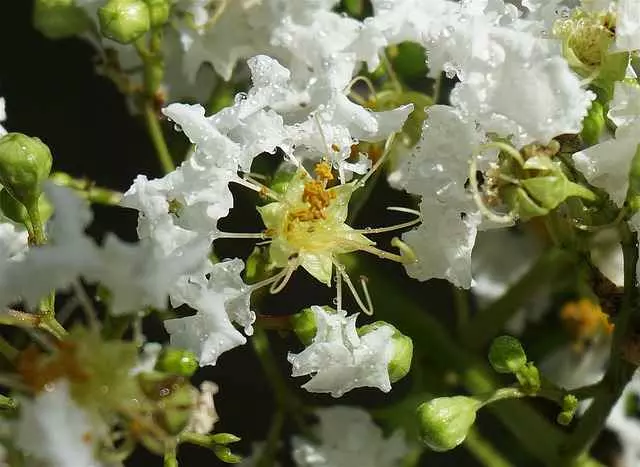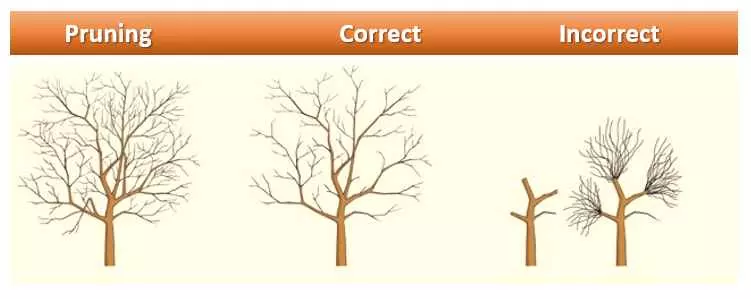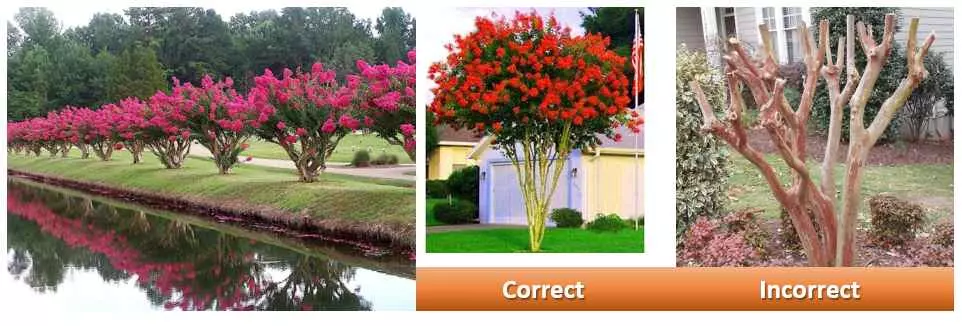The Crepe Myrtle Tree is easy to care for, although several factors must be considered to ensure it appears robust and has a full, leafy crown—one of the tree’s most appealing attributes. If you want to know how and when to prune Crepe Myrtle continue reading this article.
Table of Contents
When to Prune Crepe Myrtle?
A frequent inquiry concerning Crepe Myrtle tree pruning revolves around determining the ideal timing for this task. The question is: when is the appropriate moment to prune this tree? Pruning the Crepe Myrtle Tree is recommended after winter.
It is advisable to shorten the one-year shoots and remove the weaker ones because they do not produce flowering buds.

How to Prune Crepe Myrtle?
Pruning at the end of winter is necessary to get rid of last year’s flowering branches. This will allow that, with the arrival of spring, the new flowering will be stronger and the tree will grow with more strength and vigor.
So now we know when to prune Crepe Myrtle. Let’s now review how to prune the Crepe Myrtle tree properly to give it the correct shape that will allow it to grow healthy and flower properly. You will be able to enjoy the Crepe Myrtle pink, white, mauve, purple, or crimson flowers with curly petals. It is also important to fertilize it from time to time, preferably in early spring. It is best to use an organic fertilizer that penetrates well into the substrate.
The Crepe Myrtle Tree resists pruning well. Control its size by pruning and letting it grow into a shrub or a small tree. In the latter case, the flower clusters will be equally abundant, although smaller in size.

To prevent needing to make huge cuts later that will be difficult to seal, it is critical to prune young trees properly.
According to the stem and structure formation pruning procedures utilized, two big groups of trees can be distinguished: on the one hand, the group of trees with a single dominant or guiding stem; and on the other hand, the group of trees with a cross crown (with the main trunk and at a certain height across, from which the main branches start).
Pruning your Crepe Myrtle at the end of winter is essential to ensure robust blossoming in the upcoming season. Unpruned trees with an excess of branches tend to be less productive as they struggle to allocate nutrients effectively.

Annual pruning strongly lowers the branches so that the Crepe Myrtle tree produces flowering alternatives at the ends. It should be noted that flowering appears only on last year’s branches.
The appearance of offshoots (stems growing up from the roots) is common and they should be removed if single trunk growth is desired. If you want a bush with a clear trunk, remove any that are too close to the base. You can cut all branches from the base.
Pruning is simple, to create an open canopy form from five main branches. Pruning should be done while the tree is dormant, throughout the winter, and a few weeks before spring. It will vary greatly depending on the geographical location of the trees. Make use of high-quality, clean-cutting instruments.
Applying a disinfectant to the cutting blades beforehand isn’t a bad idea. Begin by eliminating any branches that are crossed, weak, sick, or dead. Keep the tree’s center open; if multiple heavy branches need to be pruned, we’ll space them out over time. So that the tree does not suffer significantly throughout two or three winters.
When in a colder climate zone, it is recommended to thin the leaves by pruning to allow light to penetrate well. In young specimens, pick the flowers when they fade to prevent them from turning into fruit, which wastes energy in the plant.
Removing faded flowers can further prolong flowering time. Cut upward-growing branches close to a lower branch with a diameter of at least one-third that of the one being removed.
Although it is a pest and disease-resistant plant, it can be attacked by aphids.
Powdery mildew is a common fungus that often causes problems and should be treated with fungicides regularly affecting the Crepe Myrtle tree. It appears as a dry whitish powder, covering the surface of leaves, buds, and open flowers in spring and summer.
Other fungi that produce spots on the Crepe Myrtle tree: Cercospora, foliar fungus. In autumn, collect leaves and burn them. In spring and summer, use copper, zinc, manganese, mancozeb as the main fungicide.
When any kind of pest is present, spray some fungicides evenly on leaves, stems, and branches to avoid spray irrigation, otherwise, it will result in ineffective treatment and also conducive to the spread of the disease.

How to Prune Crepe Myrtle Video
In the following video, certified arborist Allen Bates demonstrates the proper techniques for pruning a crepe myrtle tree. Allen draws from his extensive experience as an urban arborist to provide clear, step-by-step instructions tailored for both novice and expert gardeners.
Care After Prune Crepe Myrtle
After pruning your Crepe Myrtle, it’s important to provide proper care to support its recovery and promote healthy growth. Here are some guidelines:
Watering: Be sure to provide adequate water for your Crepe Myrtle, especially in the weeks after pruning when the tree is most vulnerable. Strive to maintain consistent soil moisture. Water thoroughly to saturate the root zone then allow the soil to dry slightly before watering again. Take care not to oversaturate the soil.
Mulching: Mulching around your Crepe Myrtle provides multiple benefits. A 2–3-inch layer of organic mulch conserves soil moisture, reduces weed growth and moderates soil temperature fluctuations. As the mulch decomposes over time, it will also release valuable nutrients into the soil. Replenish the mulch layer as needed.
Fertilization: Consider applying a balanced, slow-release fertilizer in the spring to support new growth. Avoid over-fertilizing, as Crepe Myrtles generally do well with minimal nutrient supplementation. Some fertilizers such as Carl Pool Crepe Myrtle Food are scientifically formulated for optimal growth of Crepe Myrtle trees to allow for proper, lush blooms while the branches develop healthily and prevent disease. Learn more about what is best fertilizer for crepe myrtles.
Monitoring Growth: Keep an eye on the tree’s growth patterns and address any irregularities promptly. Prune away any dead or diseased growth as soon as it becomes apparent.
Shaping and Maintenance: As the tree regrows, continue shaping it according to your desired form. Prune selectively to maintain an open canopy and remove any unwanted or crossing branches.
- Sold on Amazon
- Crepe-Mrytle Food
- Fast Results! Feeds Through Roots and Leaves


